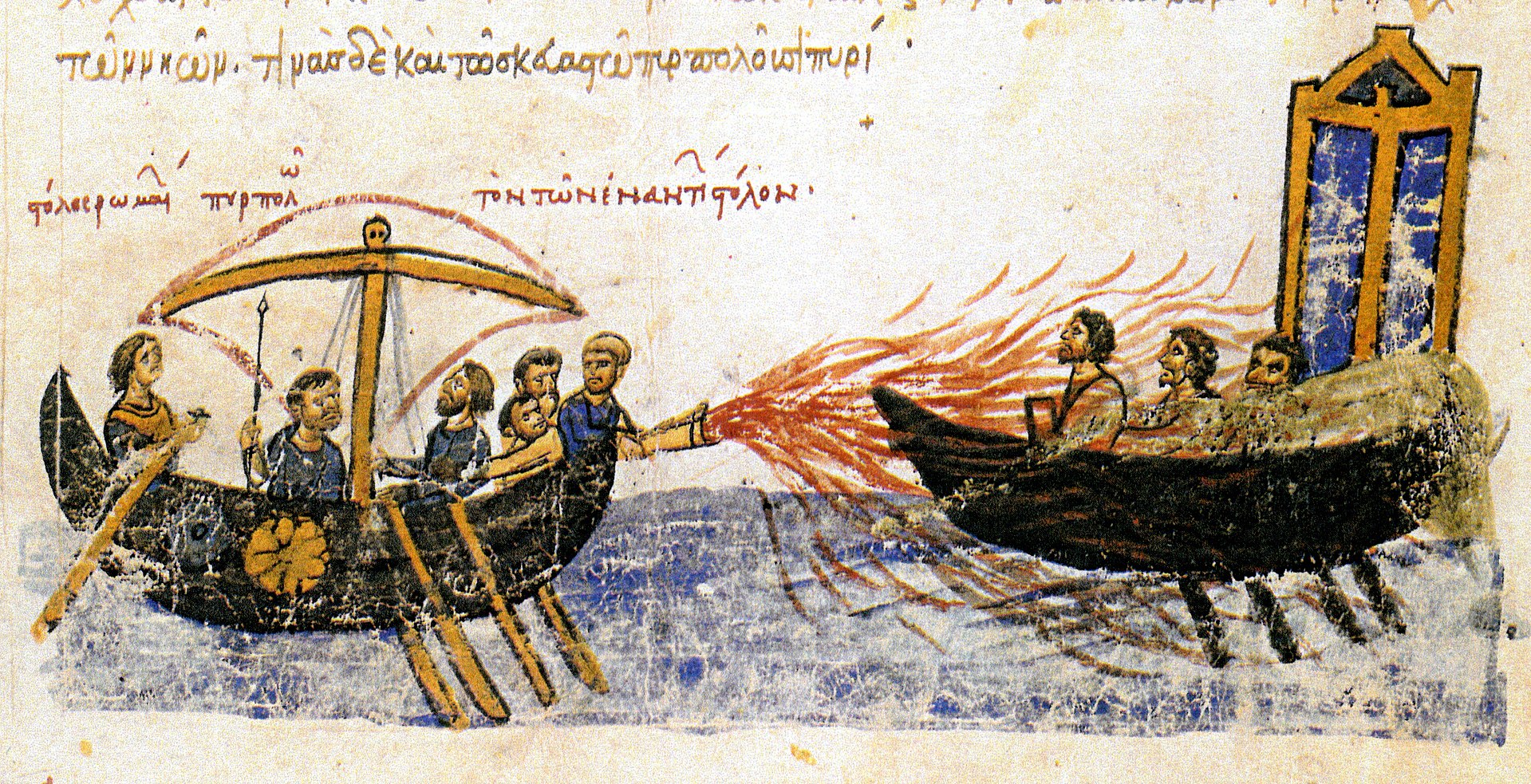
Fighting a battle in an ancient world demanded a special set of skills, not only the early types of technology. Very often, the ancient literature talks about “glorious heroes” who destroyed the enemy on land or on the sea. These ancient wars weren’t only conflicts. They were a sort of communication, psychological fight over who is more superior. So, in the case of Greek Fire and flamethrowers, we can also see hidden propaganda that aimed to weaken the enemy.
Greek Fire
Casting fire onto an enemy’s army was known long before the Ancient Greek civilization. It is well-known that the Assyrians used flaming arrows in the 9th century BC, but the intensive usage of this weapon spread during the Byzantine Empire. The use of this incendiary weapon helped the Byzantines to save their empires from Arab invasions. Byzantine soldiers used a combusting compound and threw it onto the enemy by using a special mechanism, or, in other words, a flame-throwing weapon.

The contents of the combustion mixture was a strictly guarded state secret. It is completely understandable. The strong compound helped the Byzantines to gain a tactical advantage, but also helped them to win the minds of their enemies making them appear stronger than they actually were. Pine resin, calcium oxide and sulfur are just some of the elements the experts mention when they talk about Greek Fire. The topic still sparks controversy.
Flamethrower
The Byzantines understood very quickly the power of fire in military conflicts. They also threw fire onto an enemy by using other, very efficient methods. That meant throwing flaming liquid into the enemy’s forces to destabilize them and destroy their units in every possible sense. The perfect way to achieve that was to use pressurized nozzles. Ancient history recounts mostly the use of early flamethrowers in naval battles. Flamethrowers were devices consisting of a hand-held pump that shot fire onto an enemy through a sort of tube giving the one who uses it a significant advantage. Later flamethrowers were, for example, a fire spraying machine that used petrol or hydrocarbon mixtures. It’s interesting also to see the art of that era depicting the use of fire throwing. The one who uses it is always superior and stronger compared to their enemy.

Therefore, using these weapons, the military forces, like those of the Byzantine and Early Chinese, didn’t only gain a tactical or technical advantage, but also a psychological one. It “increased their strength” in the eyes of the enemy. Fire is a symbol of strength, a symbol of the ancient gods and it reflects power. Therefore, except for commencing a new era in military weapon development, signs of early propaganda can also be spotted. So, except military aspect, Byzantine and other naval battles had a propaganda that made these old battles “magnificent and glorious” as often similarly described in the ancient sources.
One thought on “Tactical Advantage and the Power of Gods: Greek Fire and Flamethrowers in the Ancient World”